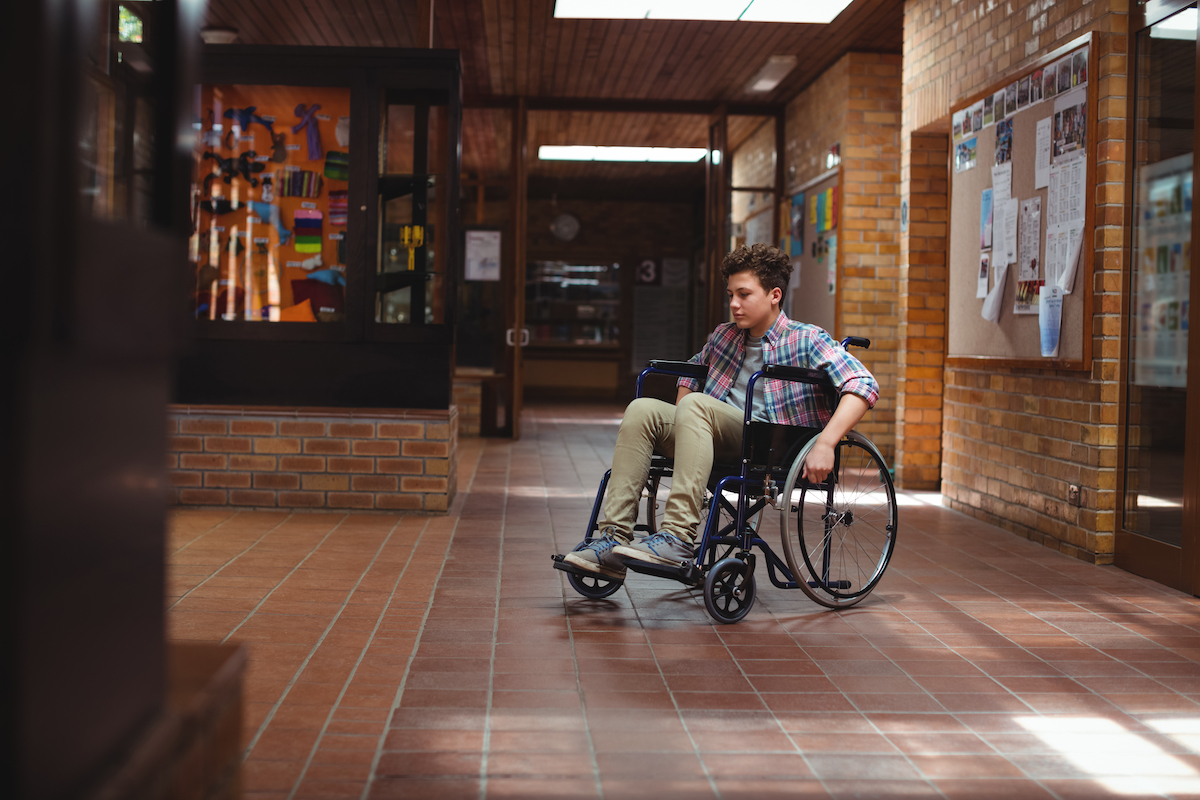Most of us have heard, in one form or another, the military’s practice of, “Leave No One Behind”. When it comes to emergencies and those with disabilities, we should also be using this practice. It is not only required by law, but ethically we have a responsibility to ensure that everyone has an equal opportunity to survive an emergency. In the development of all our school emergency, safety, and security plans, we need to consider those who have “Access and Functional Needs” as we call it in the emergency management arena. Let’s take a deeper look at what this means to you as the person responsible for your organization's safety.
Access and Functional Needs (AFN) is a term used in emergency planning to refer to the specific requirements and considerations of individuals who may have limitations or challenges in accessing and using emergency services, information, and resources due to various factors such as disabilities, language barriers, or other functional limitations. It encompasses a wide range of conditions and circumstances that may impact an individual's ability to effectively prepare for, respond to, and recover from an emergency or disaster situation. Understand that these limitations can be both permanent and temporary in nature. Temporary conditions may include injuries such as; broken bones, back injuries, loss of sight or hearing, etc.
AFN recognizes that not all individuals have the same abilities, resources, or support systems to effectively cope with emergency situations. It highlights the importance of inclusive emergency planning and response to ensure that everyone, regardless of their limitations or challenges, has equal access to information, assistance, and support during all phases of an emergency.
Some examples of individuals with access and functional needs include:
- People with disabilities: This includes individuals with mobility impairments, visual or hearing impairments, cognitive or intellectual disabilities, or chronic health conditions that require specific accommodations or assistance.
- In addition to those disabilities listed above, we have to not only consider the actual disabilities, but also how the individual might respond to the emergency. As an example; those who are on the Autism Spectrum, often have difficulty tolerating loud noises, changes in their routine, or anytime they get overwhelmed.
- Older adults: Elderly individuals may have specific needs related to mobility, medication management, or personal care, and may require additional support during emergencies.
- Individuals with limited English proficiency: People who do not speak or understand the community's dominant language may face challenges in accessing and understanding emergency information and communicating their needs.
- Children: Children have unique needs during emergencies, including emotional support, special care, and appropriate communication methods.
- Pregnant women: Pregnant women may require specialized medical care, access to safe shelter, and assistance with prenatal and postnatal care during emergencies.
- Individuals with chronic medical conditions: People with conditions such as diabetes, heart disease, respiratory disorders, or other chronic illnesses may require access to medication, medical equipment, or specialized care during emergencies.
- Individuals with access and functional needs related to transportation: This includes individuals who rely on public transportation, those with limited mobility or access to private vehicles, or individuals who require accessible transportation options.
Some of the solutions you may wish to consider when addressing these concerns are:
- Creating Individual Emergency Plans for those with AFN considerations. Getting the parents/guardians involved in this process is imperative.
- Updating those plans on a regular basis, at least annually.
- Providing wearable panic buttons to those individuals or their caretakers so they have the ability to directly communicate with the safety team should that be necessary. Many panic buttons have the ability to transmit location information, both indoors and outdoors.
- Provide redundant alert and notification options to ensure all concerns are addressed; audible alerts, PA systems, digital signage, strobe lights (different colors for different emergency protective actions), having the ability to send the alerts to more than one device (mobile, PC, MAC, Chromebooks, Smart Boards, etc.)
By considering and addressing the access and functional needs of these and other individuals, emergency planners and responders can better develop strategies, policies, and services to ensure that no one is left behind during an emergency. This may include providing accessible communication methods, accessible shelters, transportation assistance, medical support, and specialized care to meet the diverse needs of the population.
If you wish to learn more about how CrisisGo can help you create a safer school, please click here to schedule a demonstration.












(2)